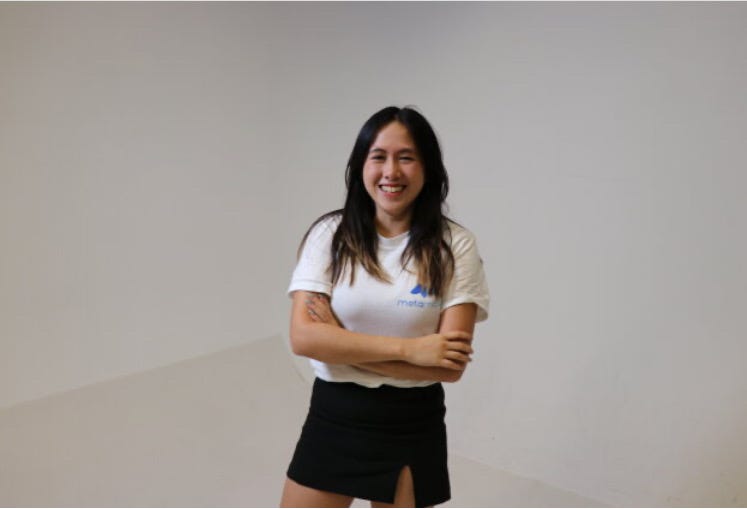Inside Hong Kong’s Influencer Economy
Much ink has been spilt on the power of the influencer in the UK.
The “influencer economy”, as it is now known, has seen Love Islanders become millionaires by the age of 21 and has reshaped the relationship between media, advertising, and personality. It also offers a revealing lens into the current state of UK media, where traditional channels increasingly rely on individual creators to bridge the gap between audiences and brands.
I wanted to know: does the same apply elsewhere?
During a recent trip to Hong Kong, I sat down with Moon Cheung, one of the city’s early content creators and now a well-known Gen Z influencer, and Jovy Yu, an entrepreneur in the creator economy. Through their perspectives, it became clear that Hong Kong’s influencer economy is younger, more fluid, and just as revealing of national media attitudes as the UK’s. But it’s also shaped by cultural hesitation, platform fragmentation, and a distinct kind of audience scrutiny that makes success and trust harder to earn.
The influencer economy is new, but rapidly expanding
When Moon started her YouTube channel in 2020, she was one of the first short-form content creators in Hong Kong. Fast forward 5 years, and many students in the country are now striving to follow in Moon’s footsteps, seeing content creation as a lucrative career option.
What has changed?
According to Moon and Jovy, a number of factors. Firstly, AI is making the barrier of entry lower. “It used to take five people to build a platform,” Moon said. “Now, it only takes one.” That same accessibility applies to content: tools like Instagram Reels allow creators to shoot, edit, and share polished videos within minutes, a major incentive in a media landscape where speed is everything.
There is a deep suspicion of local media
Hong Kong, Moon and Jovy explained, is an incredibly judgemental society. This directly impacts the way some people there consume media. While countries like Taiwan embrace media that has been made by local creators, audiences in Hong Kong are largely suspicious of content (whether that be TV or instagram reels) that originates in Hong Kong. Compared to homegrown films in Cantonese, audiences in general prefer content in Mandarin (e.g, 那些年,我們一起追的女孩), English or Japanese.
Anything Western is particularly seen as high value; this is a potential hangover from the recent colonisation of Hong Kong, Jovy explained.
For content creators like Moon, this has presented its own problems. This scepticism extends beyond language. “If you’re local, you have to offer something they’ve never seen before,” Moon said. “If you don’t, the reaction is, ‘I already know this. Why are you wasting my time?’” In other words, local creators are expected to educate, innovate, or entertain at a higher bar. Western creators, meanwhile, are more easily granted the assumption of quality.
For platforms in Hong Kong, then, localising content in Cantonese may require elevation visual and narrative cues to overcome local scepticism - or partnering with trusted influencers who can act as “cultural validators”.
Instagram dominates, but monetisation lags
In Hong Kong, Instagram is vital to the influencer ecosystem. In part, this is because of local nuances. Though there are workarounds, TikTok is banned in some areas of Hong Kong, and so cannot reach vast audiences in the way Instagram can. YouTube is popular, and can garner loyal audiences due to the fact that a creator can show their personalities in more depth than on Instagram.
However, Moon, who decided to move her content from YouTube to Instagram, explained that audiences tend to be much larger on Instagram, and that it is quicker to garner a following simply because it takes less time to produce a reel than it does to produce a YouTube video.
One major drawback for influencers and content creators on Instagram? There is a clash between the popularity of the content and earning potential. As Moon explained, reels are very popular but can’t make money for the creator. Unlike YouTube, which allows its creators to directly earn from the platform through advertising revenue sharing, Instagram does not have a monetisation programme and so the main revenue stream relies on filming a product and being paid by a brand.
For media organisations, this may offer an opportunity. If creators aren’t earning enough through the platforms themselves, they may be open to partnerships with brands or streamers who can offer fair pay and give exposure.
Gen Z need to be catered to in a specific way
Moon, as somewhat of an expert in “Gen Z”, explained that this is a generation that wants freedom. In general, she said, there seemed to be a rejection of the traditional 9-5 among this age group, and a desire to travel, try everything and be emotionally expressive.
This directly impacts how this group should be marketed to. Because they want experiences, freedom, emotion, and authentic storytelling, not just product information, there has been a general rejection of traditional advertising in Hong Kong in favour of content made by influencers.
“It’s now more about the story,” Moon told me. Gen Z doesn’t want to be sold to, they want to be invited into something. This is why even legacy celebrities from Hong Kong’s TVB (Television Broadcasts Limited) are shifting gears, embracing social media and short-form video to maintain cultural relevance.
To attract Gen Z, then, it is crucial to embed brand messages into emotionally resonant narratives.
AI: Useful, But Not Fully Trusted
When asked whether AI was a help or a hindrance in content creation, both Moon and Jovy had mixed reactions.
On the one hand, Moon explained, AI is a massive time-saver. Crucially, it can help to generate video when filming isn’t possible; for example, if the weather stops you filming. However, many creators in Hong Kong are still cautious and behind the curve.
However, as my investigation into the world of advertising revealed, human connection stills remains essential. In the world of influencing and content creation, a personality helps to build audience trust and sell or promote a product in a world where audiences are increasingly becoming more wary about what is real and what is not.
The Future of Content: Interactivity, Mini-Games, & Multimedia Responses
Jovy, when asked about the future of content creation, gave an eloquent response. In terms of monetisation potential, she stated that it would become even more common than it is now to build a product on top of your channel and tackle the consumer market through emotional storytelling. We have this in the UK already - think Molly Mae and her sun tan product (which I may or may not have in my cupboard…)
In terms of how Gen Z’s media consumption might evolve in the next 3-5 years, Jovy explained that Gen Z is showing clear signs of moving toward shorter formats, mainly in the form of interactive storytelling and gamified content. This is a result of needing to find further stimulation, as their attention spans are becoming shorter and shorter with reels.
Jovy also predicted that open AI would start to generate a video to answer your question instead of writing, to reflect that video is increasingly preferred over text as a way to consume content. It is possible this will also bleed into the way more traditional broadcasters and streamers work, though that remains to be seen.
Hong Kong may be a small market, then, but it is a rich testing ground for the future of global media. The way creators navigate trust, language, emotion, and technology here offers a blueprint, not just for reaching Gen Z, but for rebuilding the very structures of how we make and consume stories in a platform-led world.




